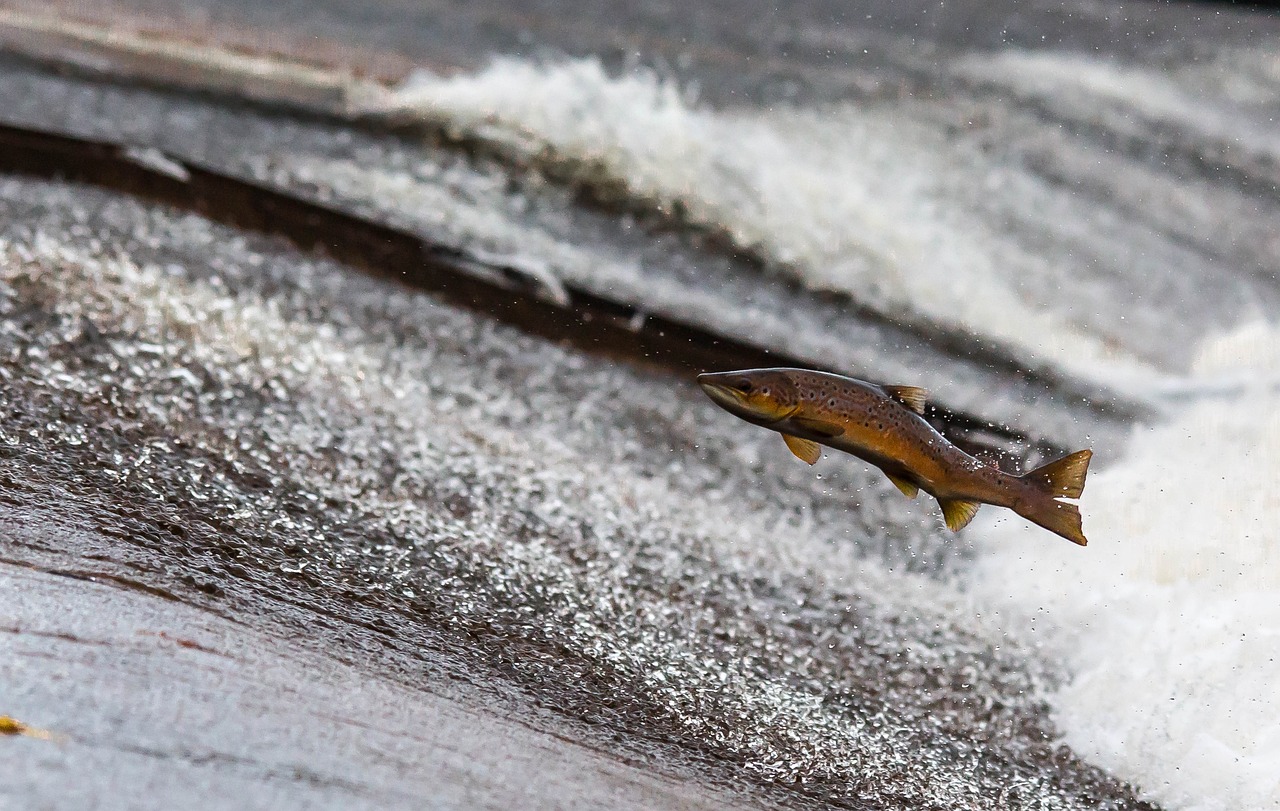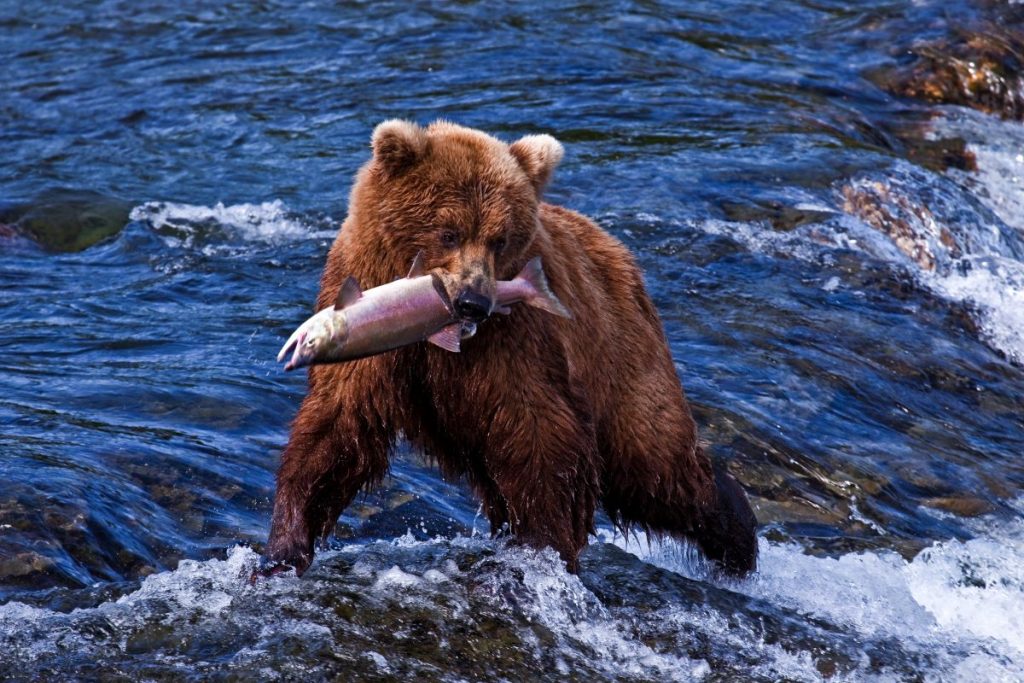
Here at CopperRiver.com we are serious about salmon. It’s delicious and nutritious, of course, but it’s also a pretty interesting fish.
The Copper River is home to three varieties of extremely popular wild salmon: chinook (king), sockeye, and coho salmon. These species, like all wild salmon, migrate each year. Salmon are anadromous fish that are born in freshwater, live out their lives in the saltwater of the ocean, and travel back to their birthplace to spawn and perish.
They lay their eggs on beds of gravel and the young salmon remain in freshwater rivers and lakes for as long as four years before making their way to the ocean. These are cold-water fish, born in icy rivers and streams and living out their adult lives in northern oceans. Copper River salmon species have lifespans ranging from five to nine years before they return to spawn.
Salmon are not the only anadromous fish, able to travel from freshwater to saltwater and back. Others include species of bass and trout. But it is salmon that are synonymous with the largest and most ecologically vital migrations.
The annual migrations from ocean to river are called salmon runs. Every type of wild salmon has a run, though the timing is dependent on the species. Copper River wild salmon varieties do not all run during the same months, making the fishing season longer than single species rivers.
Estimates put the number of salmon running on the Copper River at about two million per year. During these runs, the waters are teeming with fish that all have a single goal: spawning. The fish that run on the Copper River were born in the headwaters of the Copper River. Wild salmon return to their birthplace to reproduce, eliminating the need to search for the perfect breeding ground.
Experts aren’t certain how the wild salmon find their way back to their home rivers. The prevailing theory is that they use cues from the earth’s magnetic field to guide them to the mouth of the river. Once there, an acute sense of smell brings them through the freshwater to their familiar headwaters.

Copper River wild salmon are large species, using their powerful tails to fight the sometimes strong currents of the river to reach their breeding grounds. Salmon runs are a crucial part of the Copper River Basin ecosystem. As the fish travel upstream, they are harvested by local wildlife including bears and eagles. They are a subsistence food for native populations and a responsibly harvested delicacy for diners around the world.
Once the wild salmon run concludes in the quiet headwaters of the river, the adult salmon die, providing nutrients that support the ecosystems of the river, wetlands, and surrounding forests. Salmon are a keystone species on the Copper River, playing a vital role in the environmental health of the entire basin.
A Copper River salmon run is an incredible sight. This area is one of the largest and most abundant salmon fisheries in the world. Professional photographers capture amazing moments of grizzly bears and bald eagles fishing Alaska’s icy waters as the salmon battle the elements to reach the calm headwaters.
With vigilant management, plenty of salmon reach their breeding grounds each year, ensuring a continuing abundance of this natural wonder.
Order Copper River Salmon HERE
Sources: U.S. Gov, Wildlife Informer, Britannica